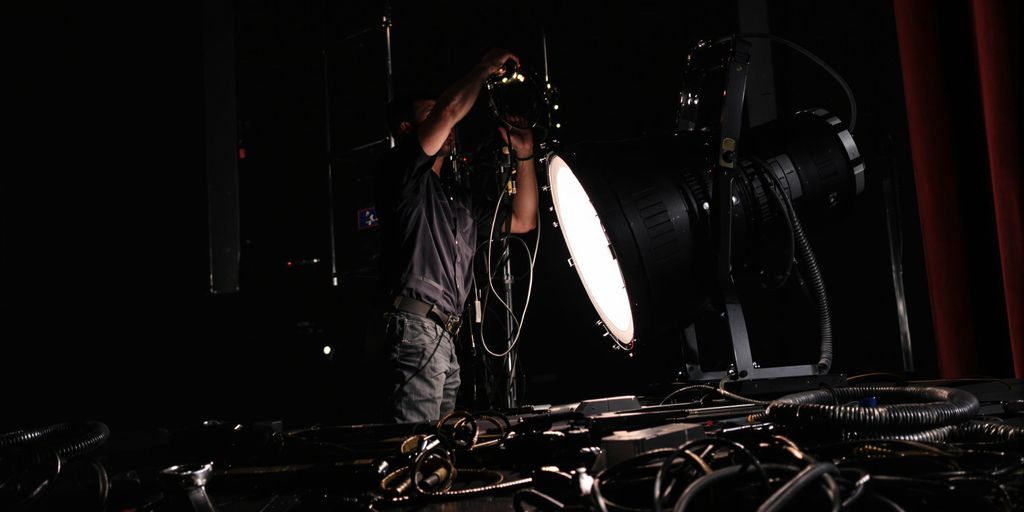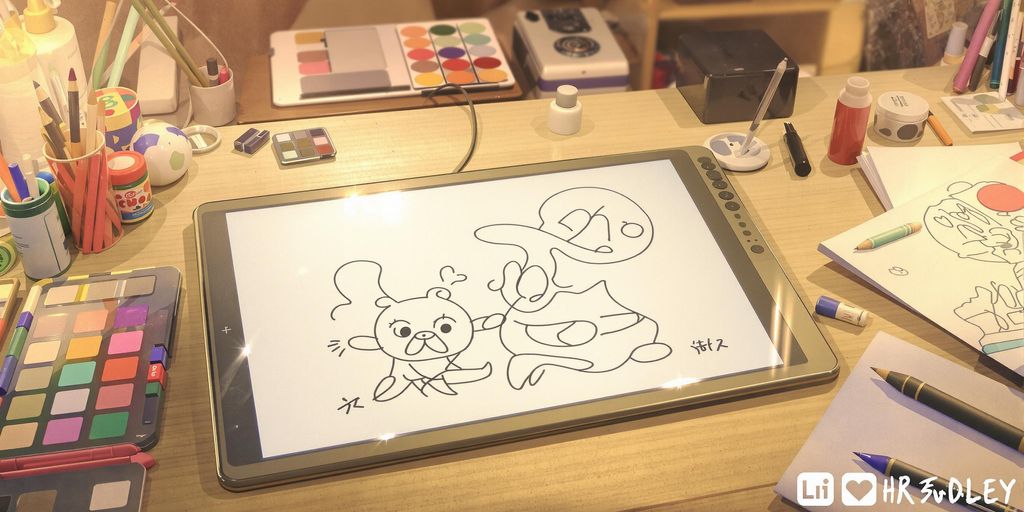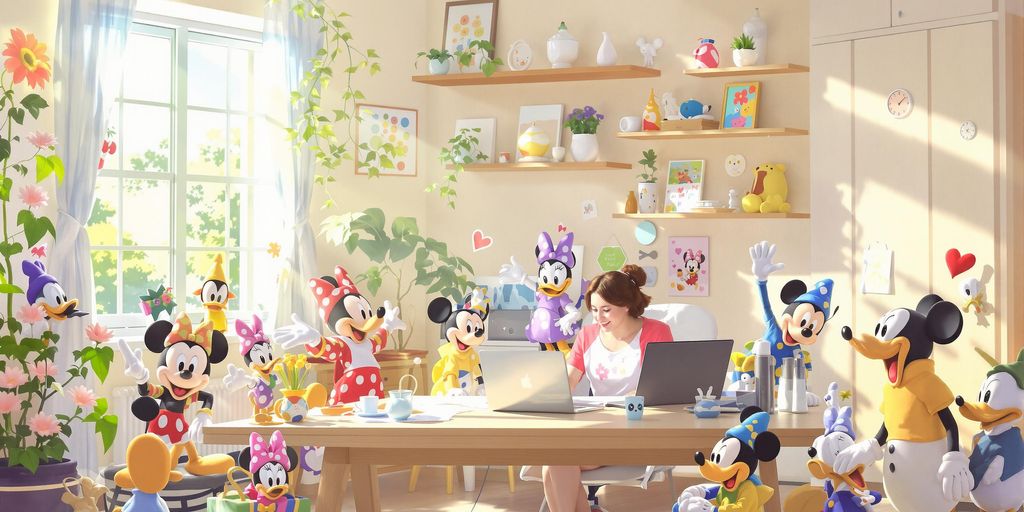So, you’re looking to get into technical theatre, huh? That’s awesome! It’s a cool field, but getting your foot in the door often means having a really good resume. We’re talking about a document that shows off all your skills, from lighting to sound to stage management. This guide will walk you through putting together a solid Technical Theatre Resume for 2025, making sure you hit all the important points that hiring managers actually care about. Let’s get started!
Key Takeaways
- Always make sure your contact information is easy to find and up-to-date.
- Your resume summary should quickly tell employers why you’re a good fit for technical theatre roles.
- Detail your work experience with specific examples of your technical skills in action.
- List out all your relevant technical skills clearly, like sound engineering or set construction.
- Consider including a portfolio section to visually showcase your projects and abilities.
1. Contact Information
Your contact information is the first thing employers see, so make it clear and easy to read. It seems obvious, but double-check everything for accuracy! You don’t want a typo costing you an interview. I remember once I accidentally put the wrong area code on my resume and didn’t get any calls for a week!
Here’s what to include:
- Full Name: Use a professional-sounding version of your name.
- Phone Number: Make sure it’s a number where you can be easily reached. I suggest using a phone number you check regularly.
- Email Address: Create a professional email address (e.g., yourname@email.com). Avoid using old or embarrassing email addresses from your past.
- Location: List your city and state. You don’t need to include your full street address for privacy reasons. Listing your general location helps employers know if you’re local or willing to relocate.
- Portfolio Link: If you have an online portfolio, include a link. This is super important for technical theatre roles, as it allows employers to see your work. You can use AI resume builders to make sure your contact information is formatted correctly and consistently.
Make sure your contact information is up-to-date and professional. This section is your first impression, so make it count!
It’s also a good idea to include links to your LinkedIn profile or other professional social media accounts, if you have them. This gives employers another way to learn more about your experience and qualifications. You can use tools like RoboApply to optimize resumes and streamline the application process, ensuring your contact information is always accurate and up-to-date. Remember, your contact information is your digital handshake, so make it a good one! When you create a technical theatre resume, make sure this section is perfect.
2. Resume Summary

The resume summary is your chance to make a killer first impression. It’s a short paragraph (or bullet points) at the top of your resume that highlights your key skills and experience. Think of it as your elevator pitch – what do you want the hiring manager to know about you in the first few seconds? RoboApply can help you tailor this section to specific job descriptions, making sure you highlight the most relevant skills.
Here’s the deal: a strong summary can be the difference between your resume getting a second look or ending up in the rejection pile. It’s gotta be concise, compelling, and tailored to the specific role you’re applying for. Generic summaries are a big no-no. You want to show them why you are the perfect fit for this job.
Here’s a breakdown of what makes a good summary:
- Highlight Key Skills: Mention your most relevant technical skills right away. Think lighting design, sound engineering, stage management, etc.
- Quantify Achievements: Use numbers to show the impact you’ve made in previous roles. For example, "Managed lighting for over 50 productions" is way more impactful than "Experienced in lighting."
- Tailor to the Job: Read the job description carefully and make sure your summary addresses the specific requirements and keywords they’re looking for. RoboApply can help with this!
A well-crafted resume summary is your opportunity to immediately grab the attention of the hiring manager and showcase why you’re the ideal candidate for the technical theatre position. It’s about making a strong, concise statement of your value proposition.
Here’s an example of a strong resume summary:
Highly skilled Lighting Designer with 8+ years of experience in theatrical productions, concerts, and corporate events.
Proficient in operating lighting consoles such as ETC EOS and GrandMA2.
Proven ability to create visually stunning lighting designs that enhance the overall performance and meet the artistic vision of the director.
And here’s an example of a weak resume summary:
Hardworking and dedicated individual seeking a position in technical theatre.
Experienced in various aspects of theatre production.
Eager to learn and contribute to a successful team.
See the difference? The first one is specific, quantifiable, and highlights key skills. The second one is generic and doesn’t tell the hiring manager anything concrete. Don’t be the second one!
Remember, your resume summary is your chance to shine. Make it count! Use theatre CV examples to get inspired and craft a summary that will get you noticed. If you’re also a videographer, make sure to highlight your technical skills and experience in your summary, just like in these videographer resume examples. And if you’re a theatre technician, check out these ATS-friendly samples to make sure your resume gets past the robots.
3. Work Experience
This section is where you show off what you’ve actually done. It’s not just a list of jobs; it’s a story of your skills in action. Think of it as your chance to prove you’re not just talking the talk. RoboApply can help you tailor your experience descriptions to match the keywords in the job description, making your resume a better fit for each application.
Example Format
Here’s a basic template you can adapt:
- Job Title: Your Role
- Company: Where You Worked
- Dates: When You Worked There (e.g., June 2023 – August 2024)
- Responsibilities: (Use bullet points to list your accomplishments and duties)
Action Verbs are Your Friend
Start each bullet point with a strong action verb. Instead of "Responsible for lighting," try "Managed lighting design and execution for 10+ productions." Here are a few more examples:
- Designed
- Implemented
- Coordinated
- Maintained
- Operated
Quantify Your Achievements
Numbers make your accomplishments more believable. Instead of "Improved sound quality," try "Improved sound quality by 30% through system upgrades." Here’s a table showing how to quantify your achievements:
| Original Statement | Improved Statement |
|---|---|
| Managed lighting. | Managed lighting for 15 theatrical productions. |
| Assisted with set construction. | Assisted with set construction, reducing build time by 20%. |
| Operated sound board. | Operated sound board for events with audiences of up to 500. |
Tailor to the Job
Don’t just copy and paste the same descriptions for every job. Read the job description carefully and highlight the skills and experiences that are most relevant. Use resume examples to help you craft your own.
Think of your work experience section as a sales pitch. You’re selling your skills and experience to the hiring manager. Make it clear, concise, and compelling.
Example Entry
Technical Director
Community Theatre, Anytown, USA
June 2023 – Present
- Oversaw all technical aspects of theatrical productions, including lighting, sound, and set construction.
- Managed a team of 5-10 technicians, providing training and guidance.
- Designed and implemented lighting and sound systems for 8 productions, resulting in positive reviews for technical quality.
- Maintained and repaired all technical equipment, ensuring smooth operation during performances.
- Collaborated with directors and designers to bring their artistic visions to life.
Showcasing Your Skills
Make sure your work experience section clearly demonstrates your technical skills. If you’re applying for a lighting design position, highlight your experience with lighting consoles, design software, and electrical systems. If you’re applying for a sound engineering position, emphasize your experience with sound boards, microphones, and audio editing software. A theater technician needs to show their skills.
Addressing Gaps in Employment
It’s okay to have gaps in your employment history. Be prepared to explain them honestly and positively. You could have been traveling, taking care of family, or pursuing further education. The key is to frame the gap in a way that doesn’t raise red flags. You can also use a functional resume format to de-emphasize gaps and focus on your skills. A strong professional summary can also help bridge those gaps.
4. Technical Skills

Technical skills are super important on a technical theatre resume. It shows employers exactly what you can do. Let’s break down how to list them effectively.
Lighting
Lighting skills cover everything from basic electricity to advanced console programming. It’s not just about hanging lights; it’s about creating the mood and atmosphere of a show.
- Electrical Theory: Understanding voltage, current, and wattage.
- Console Operation: Proficiency with ETC EOS, GrandMA2, or similar consoles.
- Fixture Maintenance: Knowing how to repair and maintain lighting instruments.
Sound
Sound skills are all about making sure the audience hears everything clearly and effectively. This includes mixing, microphone placement, and system design. If you want to showcase acting abilities, make sure your sound skills are up to par.
- Mixing Consoles: Experience with digital and analog consoles.
- Microphone Techniques: Knowing how to properly place and use different types of microphones.
- Sound System Design: Ability to design and implement a sound system for a theatrical production.
Carpentry
Carpentry skills are essential for building and assembling set pieces. This includes everything from basic construction to advanced fabrication techniques.
- Woodworking: Proficiency with hand and power tools.
- Welding: Ability to weld steel and aluminum.
- Scenic Painting: Experience with painting techniques for creating realistic and stylized scenery.
Stage Management
Stage management skills are all about organization, communication, and problem-solving. It’s about keeping the show running smoothly from rehearsals to performances.
- Calling Cues: Ability to accurately and efficiently call cues during a performance.
- Rehearsal Management: Experience with managing rehearsals and keeping track of blocking and notes.
- Communication: Excellent communication skills for working with directors, designers, and actors.
RoboApply can help you tailor your resume to highlight the specific technical skills that are most relevant to the jobs you’re applying for. It’s all about making sure your resume speaks directly to what employers are looking for.
Props
Props skills involve creating, sourcing, and managing all the objects used by actors on stage. This includes everything from furniture to hand props.
- Prop Construction: Ability to build and modify props.
- Sourcing: Knowing where to find and purchase props.
- Maintenance: Keeping props in good working condition throughout the run of a show. If you’re looking for software engineer resume examples, remember that attention to detail is key in any technical field.
Costumes
Costume skills are all about designing, constructing, and maintaining costumes for theatrical productions. This includes everything from pattern making to sewing to alterations.
- Pattern Making: Ability to create patterns for costumes.
- Sewing: Proficiency with sewing machines and hand sewing techniques.
- Alterations: Knowing how to alter and repair costumes.
When listing your technical skills, be specific and provide examples of your experience. Don’t just say you know how to use a lighting console; mention the specific consoles you’re proficient with. The more detail you provide, the better. Remember to check out essential resume skills to make sure you’re covering all your bases.
5. Education
Your education section is where you list your academic achievements. It’s pretty straightforward, but there are a few things to keep in mind to make it effective. This section is especially important if you’re just starting out and don’t have a ton of work experience yet. RoboApply can help you format this section consistently and ensure it highlights the most relevant information for each job you’re applying for.
Education Details
When listing your education, include the following:
- Name of the Institution: Be sure to write the full name of the school.
- Degree Earned: Specify the degree type (e.g., BFA, BA, MFA).
- Major/Area of Study: List your major and any relevant minors or concentrations.
- Graduation Date (or Expected Graduation Date): Include the month and year.
If you have multiple degrees, list them in reverse chronological order, with the most recent one first. If your GPA is high (3.5 or above), you might want to include it, especially if you’re early in your career. Otherwise, it’s generally okay to leave it off.
Example
Here’s an example of how to format your education section:
Example:
BFA in Technical Theatre
University of Dramatic Arts, Anytown, USA
Graduated: May 2024
BA in Theatre Arts
Community College, Anytown, USA
Graduated: May 2022
Tips for Education Section
- Relevance is Key: If you have a degree that’s not directly related to technical theatre, you can still include it, but prioritize the theatre-related education.
- Certifications: If you have certifications relevant to technical theatre, you can include them here or in a separate certifications section. resume education section can be enhanced with relevant certifications.
- High School: Generally, you don’t need to include your high school education unless you don’t have any higher education experience. If you do include it, keep it brief.
- Order Matters: List your degrees in reverse chronological order. The most recent degree should be at the top.
Additional Education Considerations
Consider these points to make your education section even stronger:
- Relevant Coursework: If you have taken specific courses that are highly relevant to the job you’re applying for, you can list them. For example, if you’re applying for a lighting design position, you might list courses like "Advanced Lighting Design" or "Stage Electrics."
- Theatrical Resume: Tailor your education section to match the job description. If the job emphasizes certain skills or knowledge areas, make sure your education section highlights those areas.
- Workshops and Seminars: If you’ve attended any relevant workshops or seminars, you can include them, especially if they’re from reputable organizations. List them similarly to how you would list a degree, including the name of the workshop, the organization that offered it, and the date.
By following these guidelines, you can create an education section that effectively showcases your academic qualifications and helps you stand out to potential employers. Remember, RoboApply can assist in ensuring your waiter resume examples are well-structured and tailored to each specific job application.
6. Awards
Listing awards on your technical theatre resume can really make you stand out. It shows you’ve been recognized for your hard work and skills. It’s not just about saying you’re good; it’s about proving it with tangible achievements. RoboApply can help you organize and present these awards effectively, ensuring they catch the eye of potential employers.
Example Award Section
Here’s how you might format your awards section:
- The Kennedy Center American College Theater Festival (KCACTF)
- Award: Stage Management Excellence Award, 2024
- Project: A Midsummer Night’s Dream
- United States Institute for Theatre Technology (USITT)
- Award: Rising Star Award, 2023
- Description: Awarded for exceptional potential in lighting design.
- Local Theatre Guild
- Award: Best Sound Design, 2022
- Production: The Sound of Music
Tips for Listing Awards
- Be Specific: Don’t just say "Award Winner." Include the name of the award, the year it was received, and the project it was for.
- Highlight Relevance: Focus on awards that directly relate to the technical theatre roles you’re applying for. A costume design award is great if you’re applying for a costume position, but less relevant for a lighting role.
- Brief Description: Add a short description if the award isn’t self-explanatory. What did you do to earn it? What skills did it recognize?
Why Awards Matter
Awards provide concrete evidence of your abilities. They show that your work has been evaluated and recognized by industry professionals. This can give you a significant edge over other candidates, especially in competitive fields like technical theatre. Think of it as a shortcut for employers to see your potential.
Using RoboApply to Showcase Awards
RoboApply can help you format your awards section consistently and professionally. It ensures that all the important details are included and presented in a way that’s easy for employers to read. Plus, it helps you tailor your resume to highlight the most relevant achievements in technical theatre for each specific job application. This targeted approach can significantly increase your chances of landing an interview. Remember to keep your awards section updated!
7. Certifications

Having certifications on your resume can really make you stand out. It shows you’ve taken the time to get officially trained and that you’re serious about your craft. Plus, some jobs might even require specific certifications, so it’s always good to have them listed clearly. RoboApply can help you highlight these in a way that gets noticed.
Here’s what you should know:
- List relevant certifications: Only include certifications that actually matter for the jobs you’re applying for. No need to clutter your resume with irrelevant stuff.
- Include the full name: Write out the full name of the certification, not just the abbreviation. For example, "Certified Rigger – Entertainment Technician Certification Program" instead of just "ETCP Certified Rigger."
- Add the issue and expiration dates: This shows that your certification is current and valid. If it’s expired, consider whether it’s still worth including (maybe if it’s a really well-known certification).
- Consider a separate section: If you have multiple certifications, give them their own section. If you only have one or two, you can include them in your "Skills" or "Education" section.
Certifications are a great way to show employers that you have the skills and knowledge they’re looking for. They can also help you stand out from other candidates who don’t have certifications. Make sure to keep them up to date!
Here’s an example of how to list a certification:
Entertainment Technician Certification Program (ETCP) Certified Rigger – Arena
Issued: 2022-08-15
Expires: 2027-08-15
This is a clear and concise way to present your certifications. Remember to tailor your resume to each job you apply for, highlighting the certifications that are most relevant. A good tech theatre resume template can help you organize this information effectively.
8. Portfolio

Your portfolio is where you really show off what you can do. It’s not just about listing skills; it’s about proving them. Think of it as your visual resume. It’s super important, especially in technical theatre, where seeing is believing. RoboApply can help you tailor your portfolio presentation to match the specific requirements of each job application, ensuring your best work gets the spotlight.
What to Include
- Photos of your work: High-quality images are a must. If you’ve worked on lighting, include well-lit photos showing the effects. If you’ve done set design, showcase different angles and details. The Theatre Design & Production portfolios are a great place to get inspiration.
- Videos: Short clips of performances or behind-the-scenes work can be incredibly effective. Think time-lapses of set construction or snippets of lighting cues in action.
- Design renderings and sketches: If you’re a designer, include your initial concepts and how they evolved into the final product. This shows your creative process.
- Technical drawings: For carpenters, electricians, and stage managers, include detailed drawings and schematics. This demonstrates your technical proficiency.
- Programs and playbills: These provide context for your work and show your involvement in specific productions.
Digital vs. Physical
While a physical portfolio is great for in-person interviews, a digital portfolio is essential for online applications. Here’s the breakdown:
- Digital Portfolio:
- Website: Create a personal website to showcase your work. It’s easy to share and can be updated regularly.
- PDF: Compile a PDF version of your portfolio for easy emailing. Make sure it’s not too large to download.
- Online Platforms: Use platforms like Behance or ArtStation to reach a wider audience.
- Physical Portfolio:
- Prints: High-quality prints of your best work.
- Binder: A professional-looking binder to organize your materials.
- Considerations: Only bring it to in-person interviews when requested.
Tips for a Strong Portfolio
- Quality over quantity: Only include your best work. It’s better to have a smaller, more impressive portfolio than a large, mediocre one.
- Tailor it: Customize your portfolio for each job application. Highlight the projects that are most relevant to the position. RoboApply can assist in identifying the most relevant projects based on the job description.
- Be organized: Structure your portfolio logically. Use clear headings and captions to explain each project. Check out the Opera SM 101 series for examples of organized work.
- Get feedback: Ask friends, mentors, or colleagues to review your portfolio and provide constructive criticism.
- Update regularly: Keep your portfolio current with your latest projects. Stale portfolios can make you look out of touch.
A well-crafted portfolio is your ticket to landing your dream job in technical theatre. It’s your chance to show, not just tell, what you’re capable of. Make it count!
Examples of Portfolio Layouts
Here are a few ideas for organizing your portfolio:
- Chronological: Arrange your projects in reverse chronological order, starting with your most recent work. This is a good option if you want to show your career progression.
- By Skill: Group your projects by skill area, such as lighting, sound, or set design. This is useful if you want to highlight specific expertise.
- By Production Type: Organize your projects by type of production, such as plays, musicals, or concerts. This can be helpful if you specialize in a particular genre.
Showcasing Your Skills
Your portfolio should clearly demonstrate your technical skills. Here’s how:
- Lighting: Include photos of your lighting designs, along with lighting plots and cue sheets.
- Sound: Provide recordings of your sound designs, along with equipment lists and signal flow diagrams.
- Set Design: Showcase your set renderings, models, and construction drawings. Include photos of the finished set.
- Costume Design: Include sketches, fabric swatches, and photos of the finished costumes.
- Stage Management: Provide copies of your prompt book, rehearsal schedules, and contact sheets. These are all important for tech sales resume.
Common Mistakes to Avoid
- Poor quality images: Blurry or poorly lit photos can ruin your portfolio.
- Lack of context: Don’t assume that people will understand your work without explanation.
- Too much text: Let your work speak for itself. Keep descriptions concise and to the point.
- Outdated work: Remove projects that no longer represent your current skill level.
- Typos and grammatical errors: Proofread everything carefully.
By following these tips, you can create a portfolio that will impress potential employers and help you land your dream job in technical theatre.
9. References
It’s pretty standard to include references on your technical theatre resume, but there are some things to keep in mind. You want to make it easy for potential employers to check you out, but you also want to be respectful of your references’ time.
Providing References
- Always ask permission before listing someone as a reference. This is just common courtesy. It also gives them a heads-up that they might be getting a call.
- Include full contact information: name, title, organization, phone number, and email address. Make it super easy for them to get in touch.
- Consider the relevance. Choose references who can speak to the specific skills and experiences required for the job you’re applying for. A professor who saw you excel in stagecraft is better than your old summer camp counselor. RoboApply can help you tailor your resume sections to match specific job requirements.
Formatting Your References
There are a couple of ways to handle references on your resume:
- Include them directly on your resume. This is fine, especially if you have the space. Just add a "References" section at the end.
- State "References available upon request." This saves space and is perfectly acceptable. Be prepared to provide a separate document with your references if asked.
Choosing the Right References
- Think about who knows your work best. A supervisor who saw you manage a complex lighting setup is a great choice.
- Consider the relationship. A former employer or professor is usually better than a friend or family member.
- Make sure they’re going to give you a good reference. It sounds obvious, but it’s worth confirming that they’re happy to speak positively about your skills and experience. You can use theater resume examples to see how others have presented their references.
It’s a good idea to keep your references in the loop about the jobs you’re applying for. Send them a quick email with the job description so they can tailor their comments to the specific role. This shows respect for their time and increases the chances of them giving a relevant and impactful reference.
Example Reference Section
Here’s how a reference section might look:
References
- Jane Doe
- Lighting Designer, Acme Theatre
- (555) 123-4567
- jane.doe@example.com
- John Smith
- Technical Director, University Theatre
- (555) 987-6543
- john.smith@example.edu
- Emily Brown
- Costume Shop Manager, Regional Playhouse
- (555) 246-8024
- emily.brown@example.org
Remember, a strong reference can really boost your chances of landing the job. Take the time to choose your references carefully and treat them with respect. Tools like RoboApply can help you create a professional art director resume and manage your references effectively.
10. Cover Letter
Okay, so you’ve got your resume all polished up. Don’t forget the cover letter! It’s your chance to really show some personality and explain why you want the job, not just what you’ve done. Think of it as the opening act to your resume’s main performance. RoboApply can help you tailor each cover letter to the specific job, making sure it hits all the right notes.
A cover letter is more than just a formality; it’s your opportunity to connect your skills and experience directly to the specific needs of the theater company or production. It shows you’ve done your homework and are genuinely interested.
Here’s the deal:
- Tailor it: Don’t send the same generic letter to every job. Change it up to match the specific requirements and culture of each theater.
- Show, don’t just tell: Instead of just saying you’re a hard worker, give an example of a time you went above and beyond on a project.
- Keep it concise: No one wants to read a novel. Aim for a single page, tops.
For example, if you’re applying for a Theater Lighting Technician position, you’d want to express excitement for the opportunity and highlight your passion for theatrical lighting.
And if you’re going for a musical theatre role, make sure your cover letter conveys passion, relevant skills, and experience.
Finally, don’t forget to showcase those crucial technical skills like AV Equipment Operation, Theatrical Lighting, and Stage Rigging.
A good cover letter can really help you stand out. It’s your chance to tell a company why you’re the perfect fit. Want to make writing them super easy? Check out RoboApply to see how our AI can help you create amazing cover letters fast.
Wrapping Things Up
So, there you have it. Getting your technical theater resume just right takes some work, but it’s totally doable. Think of it as your chance to show off what you can do and why you’re a good fit for the job. Make sure everything is clear, easy to read, and really highlights your skills. A good resume can open doors, so take your time with it. You’ve got this!
Frequently Asked Questions
What should I put on my technical theater resume?
A good technical theater resume should show off your skills and experience in things like lighting, sound, rigging, and stage management. It needs to be easy to read and highlight your best work.
How do I make my resume look good?
Make sure your resume is neat and easy to look at. Use clear headings and bullet points to list your jobs and skills. Keep it to one page if you can, especially if you’re just starting out.
Should I change my resume for different jobs?
Yes, it’s a really good idea to change your resume a little bit for each job you apply for. This way, you can make sure it talks about the skills and experience that matter most to that specific job.
What if I don’t have much experience?
If you don’t have a lot of work experience, focus on your school projects, volunteer work, or any shows you helped with. Also, list any special skills you have, like knowing how to use certain equipment or software.
What is a portfolio and do I need one?
A portfolio is like a collection of your best work. For technical theater, this could be pictures of sets you built, sound designs you made, or lighting plots you created. It helps show what you can do.
Where can I find technical theater jobs?
You can find jobs by looking online on theater websites, job boards, or even through schools that have theater programs. Talking to people already in the business can also help a lot.
What’s a cover letter for?
A cover letter is a short letter you send with your resume. It’s where you can tell the hiring manager why you’re excited about the job and why you’re a good fit, in your own words.
How can I make sure my resume is perfect?
Always double-check your resume for any mistakes in spelling or grammar. Ask a friend or teacher to read it over too. A clean resume shows you pay attention to details.


















